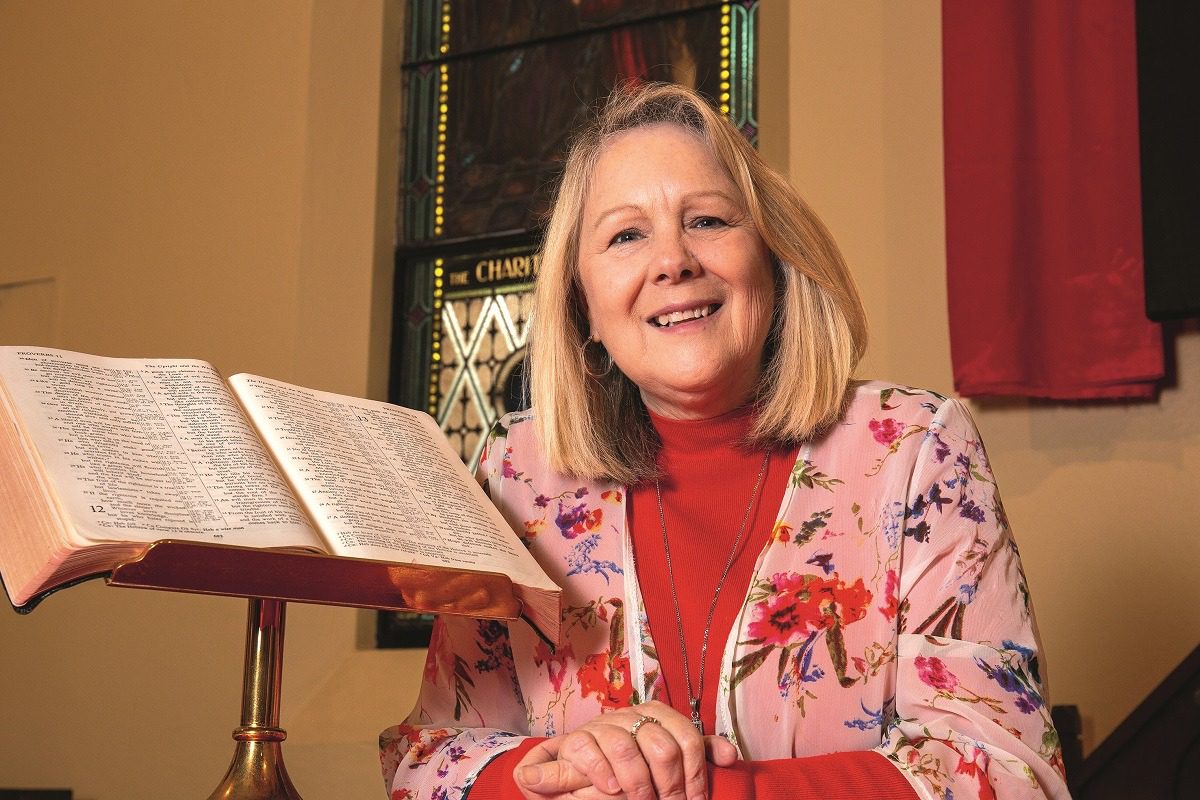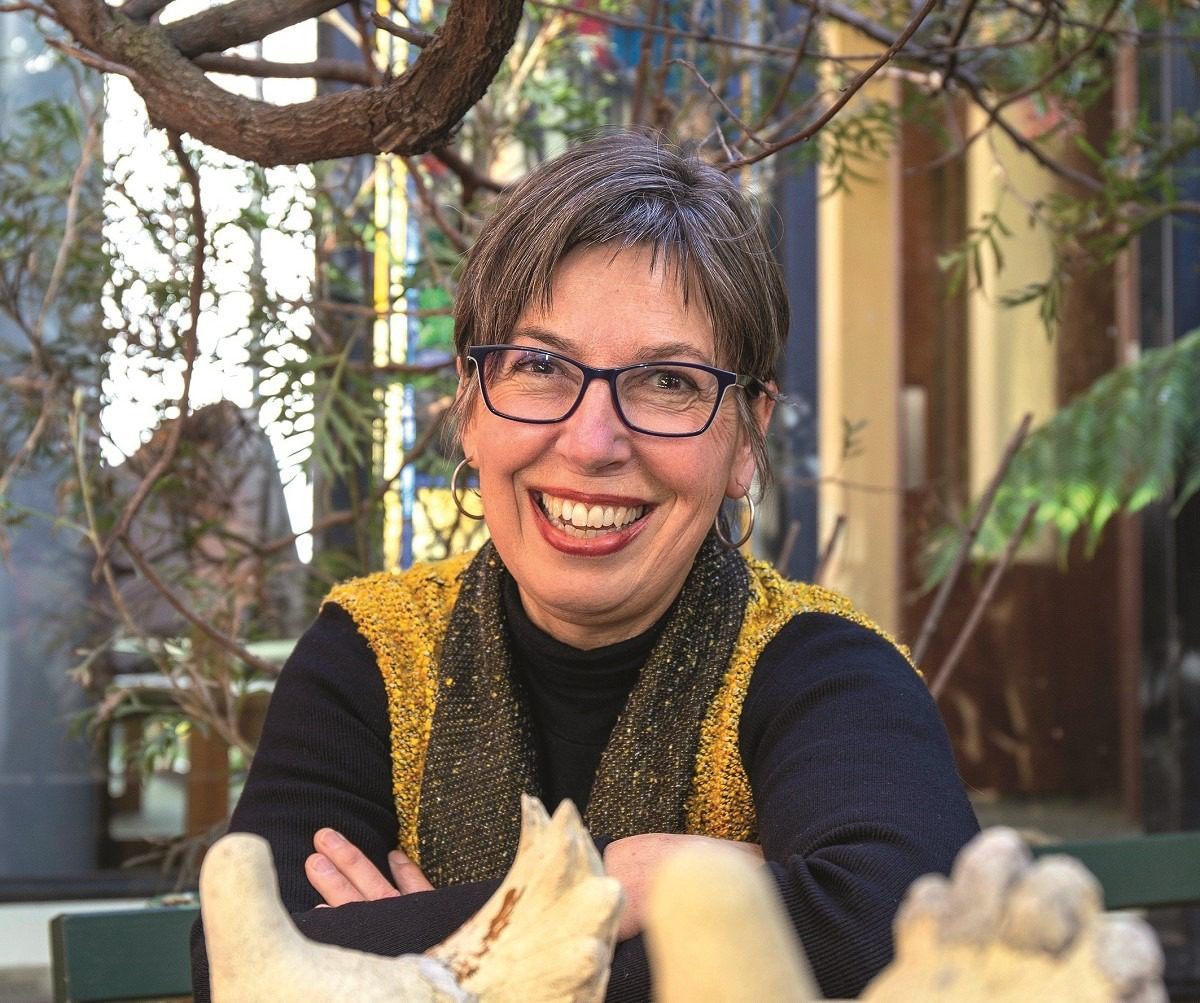By Marina Williams
Moments after walking into worship at Pilgrim Uniting Church Yarraville, Lauris Knight felt comfortable.
By her third visit Lauris was certain and overcome with relief that she had found her new spiritual home.
“It was a powerful feeling, and one my friends felt, too,” she says, reflecting on the day nearly two years ago that marked the end of a five-month search by a worshipping group from Altona Meadows Laverton Uniting Church (AML) to find a new place of worship.
At the time, Lauris was a long-term member and council secretary of AML, which had decided to close its English-speaking service following a congregational viability study.
AML continues to be part of the community in Melbourne’s south west, offering its first service 46 years ago.
As with many churches, congregation numbers have fluctuated through the years.
In 2022, the small congregation offered two church services – at 10am and 2pm.
Lauris worshipped at what the congregation called the ‘10am worshipping community’.
“We are in a multicultural community, and we offered a morning service in English and an afternoon service in Fijian,” she says.
Combined services were regularly conducted with a joint church council, but dwindling numbers meant “we were struggling to do all the extras outside of church council”.
“Many of us had been worshipping together since 1982,” she says of the 10am congregation.
“We were a very tight and family-oriented community.
“We weren’t an older congregation, we were intergenerational, but that meant young families have other activities to do on weekends.
“It just got too much financially and emotionally for us … we were getting worn down a bit and we realised we had to make a change.”
In listening to the congregation’s concerns, the Presbytery of Port Phillip West suggested the Church Council complete a congregational viability study.
Willingly engaged, the findings were not unexpected, says Lauris, yet the process enabled them to make an “informed decision”.
“It confirmed what we knew in our hearts and had discussed as a group – remaining on our own was not sustainable in the long term,” she says.
“As a small congregation we just didn’t have the energy or time needed to run the business side of the church – maintenance of an ageing building, bookings, run activities – and that was affecting how some of us were enjoying our worship.”

Narelle says the Presbytery can play a supportive role when members of a congregation are considering a move.
Presbytery Minister Rev Narelle Collas supported AML through its review and discernment, and says the council was empowered to make its own decisions, while identifying strengths and weaknesses when exploring viable ministry options.
AML’s story, Narelle says, provides insights into how congregations can navigate viability concerns and embrace change through a process that examines more than just attendance or finances.
“We also look at spiritual viability, and placement,” she says.
“How well has a congregation sustained placements, how they treat ministers, how close are they to other Uniting Church congregations, their leadership viability and how well they are maintaining their property.
“It helps congregations deal with the reality of where they’re at and, on completing the review, AML was prepared to be courageous and make hard decisions on their future.”
Following the study, the 10am members actively explored options for their future.
“We tried worshipping in homes and visited various churches around the area, but it was difficult to find the right fit as we’ve always sat in a circle,” Lauris says.
“We’ve never been in pews. There were no other churches around that fitted our style of worship.”
Until, she says, the ‘10am worshipping community’ visited Pilgrim.
“Our friend Rev Ikani Vaitohi was being inducted as Minister at Pilgrim, so a couple of us went along to support him,” Lauris says.
“We thought the place had a lovely feel to it, and the people were lovely, so we continued to visit, and felt God was definitely guiding us there.”
Lauris is proud her old friend is the Minister at Pilgrim.
“He is marvellous and shows wonderful spiritual leadership; it is amazing to think how his move also helped guide us to Pilgrim,” she says.
While the 10am community formally decided to close and move to Pilgrim in September 2022, the 2pm community chose to continue worshipping at the AML site.
It has since experienced a growth in numbers and continues to work with the Presbytery.
“AML’s journey demonstrates how a Presbytery can walk alongside a congregation with empathy, rituals, and a process to empower decision making,” Narelle says.
“It also shows that change can bring new life, as the merged Pilgrim congregation and growing Fijian group have found.
“Most importantly, it illustrates that discernment requires considering more than numbers: the spiritual health and joy of God’s people must come first.”

“We instantly recognised shared values in their worship, and connections quickly formed between members,” Ros says of the bond between former Altona Meadows Laverton and Pilgrim congregation members.
The decision to move was unanimous, Lauris says, and “the welcome incredible”.
“We didn’t go through formal amalgamations or anything like that,” she says.
“We all agreed to go because we enjoyed worshipping together, and we didn’t want to fragment.
“Right from the beginning, we were made to feel part of the Pilgrim community.
“We were greeted with smiles and open arms, and felt they were genuinely interested in us as a person and family.
“We felt connected, they are good Christian people.”
The connection was mutual, says Ros Harris, Church Council Chair at Pilgrim UC.
“We instantly recognised shared values in their worship, and connections quickly formed between members,” Ros says.
“Helping make it a success, we believe, was Lauris and the group not approaching the church as strangers.
“They visited Pilgrim church several times to get a feel for their new community.”
The Presbytery guided and supported the congregation through rituals of closure and welcome.
Welcoming AML meant Pilgrim being open to its own transformation, Ros says.
“Flexibility and collaboration are in our DNA,” she says.
“Pilgrim formed in 1989 through the merger of four surrounding churches, so we understand change and the importance of nurturing people through that.
“The congregation didn’t want to pressure their new members into formal roles or force them to conform to our way of doing things.
“Instead, we extended a gentle invitation to participate in whatever way they felt called.
“Over time, this has allowed AML’s gifts to shine as they take on leadership roles as elders, worship leaders and committee members.”
Lauris advised congregations considering change to “embrace it and see it as a positive”.
“With Narelle’s gentle guidance through the viability study, we were able to discern God’s calling,” she says.
“Our journey has shown that with openness and community, change can strengthen rather than weaken one’s faith.”

